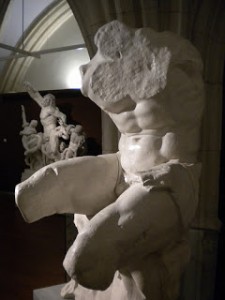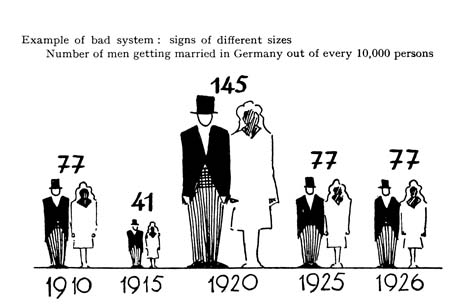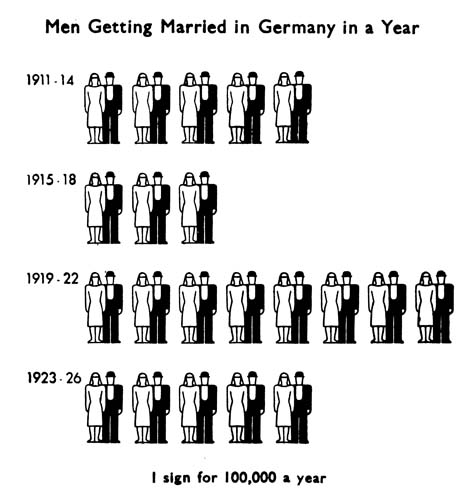Throughout our fourth module, the term remediation – and the concept of it – has stuck with me the most. In J. D. Bolter’s book, Writing Space, the inferred definition could be “change with some kind of clash or one-upmanship” – books remediated manuscripts, video games remediated movies, etc. (p. 24 – 25). A quick Google search for definitions of remediation are not altogether dissimilar: “act of correcting an error or a fault”, “set straight or right”, “the reconciliation of two opposing forces”. All imply that there is some sort of opposition or wrongdoing. In each case of remediation of media / text that we have looked at in our course, which side is “wrong”, and which is “right”? How can inanimate text take action upon other forms and remediate it?
Au Naturel?
At the beginning of this module, my initial thought was that hypertext and new forms of writing were not as natural as writing by hand or typing. Bolter noted that it is associative, multiple, and responsive, as are our own thoughts, which would seem more natural (p. 42). I was of the mind that “textual asides” – links / insertions of media – may not make complete sense to all readers – almost like an in-joke or a quirky sense of humour. Upon further reflection, however, the ability to create text in a way that can embed personal thoughts, visuals, references, ideas, and experiences has much more voice, is more “oral”, and is, therefore, more natural. Like others, I may have been taking a reactive response to modern methods of text creation – viewing it as an invasive species in the ecology of my sense of literacy as Zhao and Frank may have thought. Now, I view hypertext and modern forms of literacy as more evolutionary and natural than infiltrative.
Change Is Inevitable
So, if text is evolving, just exactly how is it changing? Marshall McLuhan believed that the medium itself was the message. I see technology as changing the forms or types of writing more than technology itself being the chief message; or, perhaps, that what technology affords us is the real message – interaction, collaboration, connecting, organization, etc. Texts are increasingly being created with branches to other sources of information. They are also being created with organization and categorization built in: tags, hashtags, links, labels, @ signs to connect to other authors. The meaning of these texts changes compared to standard text – it becomes richer, and more social.
In other terms of change, Bolter and Kress also noted that visual modes of representing were increasing at the expense of textual ones. This stands to reason, especially with descriptive forms of writing. As covered by Bolter when mentioning ekphrasis and a logocentric desire, we often want to fit the visual world into words. New methods of creating text that combine increasingly more visuals and other forms of text into one (video, audio, images, etc. – Glogster or Prezi for example) are coming into our textual world all the time. Since images, video, words, etc. are all forms of text, I would simply rephrase what Bolter and Kress said. New ways of representing are enhancing what can be conveyed with words – not at the expense of words, just the amount of them. It is not a decline in quality, just the quantity of one part of text overall. It was a bit morbid of Bolter to describe prose as a near-death host body that exists only because more recent forms of text need it to (p. 56) – the written word will not die, and other forms of text are not consciously trying to kill it. It just has to share some space on its page or screen.
How Does It All Work? Where Are We Going?
I would argue that, in places of remediation, where texts and technologies meet and compete, that the pre-existing technology or text is most often thought to be right – at least by those who resist change. Digital immigrants are more resistant to change, since they view newer technologies or methods as more of a challenge than do digital natives. If people could, while still maintaining a critical view, accept new text modes as potentially useful, there would be less need for resistance, tension, and remediation. I liked Kress’ idea that writing today is like orchestration (p. 160) – the writer, as a conductor, needs to know which instruments and voices (or tools and writing forms) to use at certain times, keeping them in a proper, harmonious balance. Cope and Kalantzis referred to the need of “multiskilling” (p. 169) – that modern writers need to be able to use multiple skills well to be able to deftly create quality texts in a multiliterate world. My only issue with this is the notion that people may not be able to truly multitask (Tough, 2011). If this is true, how can modern writers really use multiskilling effectively? If they can, perhaps they will become part of the world’s “new common sense”, as Kress put it. He said, “taking meaning and making meaning from many sources of information, from many different sign-systems, will become the new common sense” (p. 17). Since modern texts are often social and open to connection / collaboration, this “common sense” or common knowledge notion makes a lot of… well, sense. Perhaps if more people share in this common sense, and are skilled – at least functionally – in many text forms, there may be less of a monopoly of information as we have seen in the past, and enough critical thought to ward off a total technology takeover, or technopoly.
All that being said, where are we going? I cannot help but think of Ong’s notion of secondary orality – that many technologies rely on the written word to exist and function. Given text’s overall shift to include more images and fewer words, will we evolve into some “secondary literacy”? Where the notions of community and group thought continue, but are based on more visual texts than written words, and text-dominated works were not the most recent dominant form?
References:
Bolter, J. D. (2001). Writing Space: Computers, Hypertext, and the Remediation of Print (Second.). Mahwah, NJ: Lawrence Erlbaum Associates.
Cope, B. and Kalantzis, M. (2009). “‘Multiliteracies’: New Literacies, New Learning. Pedagogies: An International Journal. 4(3), 164-195. Retrieved November 11, 2012, from http://www.tandfonline.com/doi/pdf/10.1080/15544800903076044
Kress, G. (2005). Gains and losses: New forms of texts, knowledge, and learning. Computers and Composition, 22(1), 5–22. doi:10.1016/j.compcom.2004.12.004
McLuhan, M. (1964). Understanding media; the extensions of man. New York: McGraw-Hill.
Ong, W. (1982.) Orality and literacy: The technologizing of the word. London: Methuen.
Postman, N. (1992). Technopoly: The surrender of culture to technology. New York: Vintage Books.
Prensky, M. (2001). Digital natives, digital immigrants. On the Horizon. NCB University Press, Vol. 9 No. 5, October 2001.
Tough, M. (2011, April 21). Multi-tasking doesn’t exist. The Change Leadership Company – Building Change Expertise. Retrieved November 11, 2012, from http://changeleaders.com.au/multi-tasking-doesnt-exist/
Zhao, Y., and Frank, K. A. (Winter, 2003) Factors affecting technology uses in schools: an ecological perspective. American Educational Research Journal, 40(4), 807-840.










Remediation: Making Artists of Us All?
The Writing Space
In theory, the writing space is an abstract concept which starts with the inner workings of a creator’s mind, is followed by the act of expressing those thoughts onto a material to be viewed by others, and ends with the resulting physical artifact. Technologies, defined as both tools and techniques, are rapidly discovered, adopted, adapted and changed which places the writing space in a continuous state of flux. As a direct result, the materials creators use to document their ideas are ever evolving. The one constant in the world of communication, whether oral or written, is where end text product originates from. Ideas are born from the mind, the strongest and most imperative tool in an author’s arsenal.
A Material World
Technology, including both the tools and the techniques used to create written text, has an indelible impact on developing literacy. A quote from Christina Haas’ Writing Technology: Studies on the Materiality of Literacy appears in Bolter’s Writing Space: “Writing is situated in the material world in a number of ways. It always occurs in a material setting, employs material tools, and results in material artifacts” (Haas, p. 4). In this vein, it is impossible to separate the material world from text, from the semantics of creation to the artifacts that result. How we discover, adapt, and utilize materials to create and leave those legacies is where change and evolution lie within the world of literacy. Digital natives, or those who have spent the entirety of their lives surrounded by digital technology, will inevitably feel more comfortable utilizing material tools such as mobiles and touchscreens to both create and process text than perhaps those who grew up using pen and paper or sketchpads. The ease with which digital natives create and edit media has led to a rise in internet blogging and sharing sites such as tumblr and reddit where a population of increasingly younger users create and share both original and transformative texts with an international audience.
Remediation
Bolter talks of remediation, or the process of a newer medium taking the place of an older one, imitating in a form of homage whilst simultaneously rivaling it by making claims to improve upon what already exists. (Bolter, p. 23) An example of material adaptation partaining to media text that I encounter often is the case of the digital camera. Students who have grown up only knowing of the existence of the digital camera will often ask to see a photo immediately after it has been taken on the camera’s digital screen. There is no way to know if children being painted by a Renaissance master would have dared to leave their poses to run over to view a canvas, but it is arguable that a child’s curiosity is inherent. Undoubtedly somewhere in the 1970s, a child accidentally opened a camera to unsuccessfully peek at an image on the film after their photo was taken, ruining the film as a result. The advancement of the materials in this case does not change the art of capturing an image itself but rather the means to produce, view, and utilize it further.
How we view the written word today is certainly adapting and changing at an increasingly rapid rate. Readers take an active role in determining properties of writing space by placing certain demands on the text and on the technology. (Bolter, p. 12) Developing cultures throughout history designed how viewers would process information based upon their own wants and needs, from continuous scrolls which were adapted to contain columns, to illuminated pages bound in volumes and eventually mass produced by presses.
Electronic mediums, such as blogs, offer a variety of layout choices in addition to endless visual choice possibilities in the form of fonts, colours, imagery, and hypermedia. If feedback is overwhelmingly negative, an author can adapt and change these choices to fit the needs of their readers, often with the advantage of immediacy. Changes can be processed and made live often with simple coding or even a few clicks of the mouse. Authors can vary greatly in age and experience due to the range of simplicity in publishing software.
Quality Versus Quantity
In the exploration of the material, the inner process of creation is often overlooked. Some may argue that the advances in digital technology make it increasingly easier for anyone to become an artist. Others will take the opposite stance, defending the idea of inspired talent and quality of expression. Social media and internet publishing have undoubtedly made it easier to express ideas and communicate them on a much grander scale than ever before, but is viral popularity the new way to measure artistic success or is it simply a case of textual oversaturation? Evolution of the material will change the writing space as a whole, but it will also have an impact on the communication broadcast going forward.
References
Bolter, J.D. (2001). Writing Space. New York, NY: Lawrence Erlbaum Associates.
Haas, C. (1996). Writing technology: Studies on the materiality of literacy. Mahwah, NJ: Lawrence Erlbaum Associates.
Prensky, M. (2001). “Digital natives, digital immigrants”. On the horizon, Oct 2001, 9 (5). Lincoln: NCB University Press.